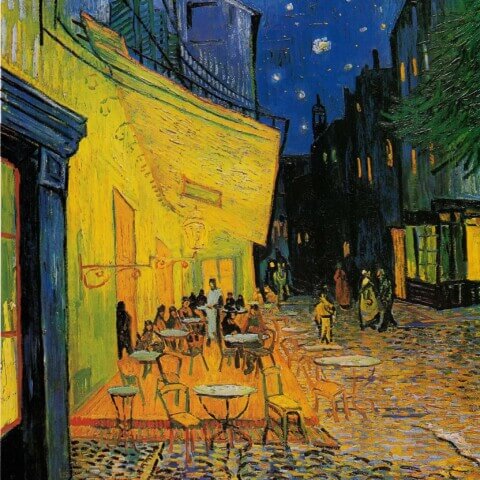Title: The Japanese Bridge (The Water-Lily Pond, Water Irises)
Artist: Claude Monet
Year: 1899
Claude Monet’s painting “The Japanese Bridge” (also known as “The Water-Lily Pond, Water Irises”) is one of the iconic works in the Impressionist art movement. Painted in 1899, the artwork depicts a wooden footbridge that spanned over a pond in Monet’s garden in Giverny, a small town located in the northern part of France.
Art Style: Impressionism
Impressionism was a revolutionary art movement that began in the late 19th century. The style aimed to capture the impression or the immediate sensation that a scene or object provoked in the artist. Instead of focusing on fine details and realistic depictions, Impressionists prioritized capturing the fleeting effects of light, color, and atmosphere.
In the case of “The Japanese Bridge,” Monet uses loose brushwork and a vibrant palette to convey the interplay of light and color in his own garden. Rather than painting a detailed, exact replica of the bridge and surrounding foliage, he captures the fleeting moments of light and color at a specific time of day, resulting in a vibrant, almost dreamlike representation of the scene. The painting pulses with life, capturing the shimmering reflections of the water, the lush greenery, and the arched bridge all at once.
Why is it Special?
There are several reasons why this painting is particularly special.
1. Personal Significance: The Japanese bridge was part of Monet’s personal garden in Giverny, a place he found immense inspiration from. He created many works focusing on different elements of this garden, and the bridge was a motif he returned to numerous times. These paintings provide a unique, intimate glimpse into Monet’s life and surroundings.
2. Impact on Art: Monet’s work, including “The Japanese Bridge,” had a profound impact on the direction of modern art. The painting exemplifies the Impressionist focus on color, light, and personal perception, all of which were revolutionary concepts at the time.
3. Mastery of Subject: Monet was known for his series paintings, where he would paint the same subject under different lighting conditions to capture the changing atmosphere. “The Japanese Bridge” is one of the many paintings in his series of the water lily pond in his garden. His ability to transform the same scene into countless variations, each with its own mood and beauty, showcases Monet’s mastery of his subject and his medium.
4. East Meets West: The Japanese Bridge also represents the melding of Eastern and Western traditions. During the late 19th century, there was a craze for Japanese art and culture in Europe, termed “Japonisme.” Monet was an avid collector of Japanese prints, and his bridge was styled after the ones he saw in these artworks. The painting not only illustrates his love for his garden but also his appreciation for Japanese aesthetics.
In conclusion, “The Japanese Bridge” by Claude Monet is special due to its personal significance to the artist, its impact on the art world, its display of Monet’s mastery, and its representation of a cultural blending. It’s a painting that reflects the epitome of the Impressionist style and showcases Monet’s artistic vision.
At our art gallery, we take pride in offering comprehensive global shipping to our esteemed clientele. We understand the significance of your art acquisitions and the need to transport them with utmost care. Hence, we are committed to delivering your chosen paintings to any address worldwide and free of any additional charge.
Our reliable courier service partners are experienced in handling precious art pieces and ensure that your painting reaches you in pristine condition. We offer fully insured, door-to-door delivery, providing you with peace of mind that your artwork is protected during transit.
Moreover, to accommodate your unique framing preferences, we offer the distinctive service of sending your purchased artwork directly to any framer across the globe. This enables you to have your painting framed locally by your trusted framer, reducing the risk of damage during transportation.
Regardless of your location or your framer’s, we strive to make the process as seamless as possible. It is our goal to provide exceptional service that caters to your needs and ensures the safe delivery of your valuable artwork.
We invite you to experience our hassle-free, worldwide shipping service, which is aimed at delivering your prized art pieces safely and efficiently, wherever you may be.
Similar paintings
Join our newsletter
Signup for our newsletter and receive our inspiration guide and 20% discount on your first order!





